The rainy season is already here. And heavy rain can cause flooding on many roads in the Philippines. Remember that floodwater deals a lot of damage to a vehicle - from the engine, electrical system, to its interiors.
Having your vehicle submerged in floodwater can lead to costly repairs. However, you can reduce the amount you have to spend if you know what to do. Philkotse.com shares these easy tips on what to do when your vehicle has been immersed in floodwater.
1. Do not start the vehicle
You might think that starting the vehicle that has been flooded is the right thing to do. It might be the very first thing to come to mind to check if it still works.
Just don’t. Starting your car when there’s water in the engine can short-circuit the electrical system of the car. it can also lead to further damage beyond repair and will make your car completely unusable.
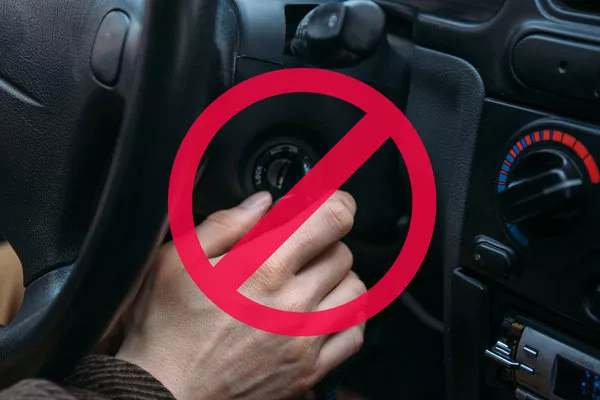
Starting your car when there’s water in the engine can short-circuit the vehicle’s electrical system
>>> Read more: Super Typhoon Mangkhut Closing in, Read This Safety Guide Before Driving into Flood Water in the Philippines.
2. Evaluate the damage
Inspect your vehicle as soon as it is safe to do so, especially if the depth of the floodwater is over a few feet. The first thing you have to do is to look for evidence of water line left by debris and mud surrounding your vehicle. You need to identify how deep the floodwater was.
The water level can indicate the condition of your vehicle. If the water didn’t reach the bottom of the car doors, then it should not cause any damage. If the floodwater reached the bottom part of the dashboard, the insurance provider will likely consider the vehicle totaled.
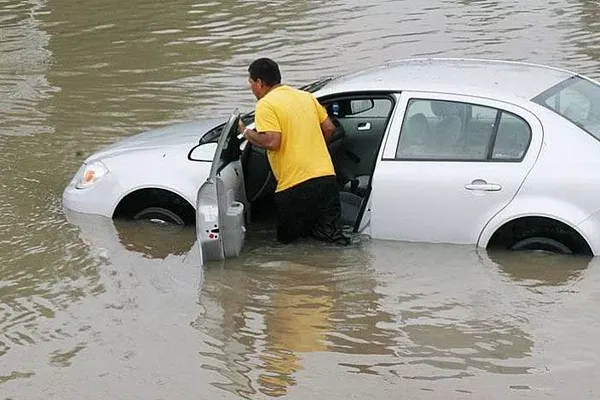
The water level can indicate the condition of your vehicle
3. Review your vehicle’s insurance policy
A comprehensive policy covering theft and fire will most likely cover flood damage as well. If you have the same insurance plan, make sure to read it thoroughly for a better understanding of what it will and will not replace or repair.
For you to determine how to proceed, call the agent that will work with you. Keep in mind that most of the repairs should be covered by your policy from the engine to the floor mats.
>>> Also read: 5 steps to know if you are buying a flood-damaged car.
4. Start cleaning
If your vehicle was submerged in floodwater for a long period, there are higher chances of your car developing rust and corrosion. Once the typhoon clears and it’s already safe to go out, go to your vehicle and start the cleaning and drying process. Quickly dry the interior to prevent the growth of molds.
Leave the window and doors open to air the interiors out. Grab a towel and start mopping up the water in the cabin. Use a wet/dry vacuum to dry the remaining fluid on the upholstery and carpet. For better drying, bring the cushions and seats outside if possible. You can also use dehumidifiers and fans to speed up the drying process.
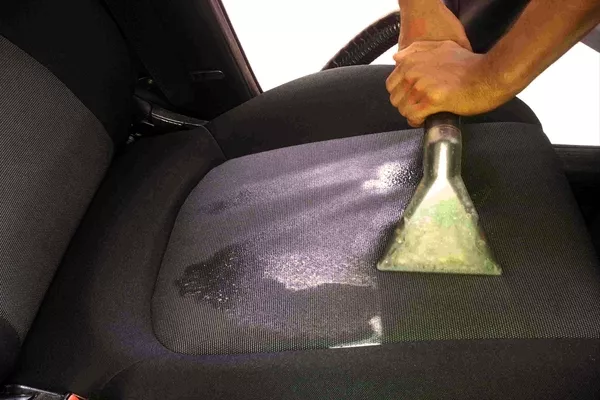
Start the cleaning and drying process
5. Replace components if needed
You might probably need to replace interior components such as door panels, carpets, upholstery, and floor mats that were immersed in floodwater. Mold can be lingering in the cabin.
You can use baking soda and a sponge to deodorize your car before you put back the components.
>>> Check out: Best car features to drive through floods in the Philippines.
6. Check the engine oil
By inspecting the parts under the hood of your car, you can assess the total damage brought by the floodwater. For signs of engine damage, initially inspect the oil level. If you notice water droplets on the dipstick, it’s a clear indication of a potential problem. If that is the case, do not attempt to start the vehicle.
The presence of droplets means that water may already get into the engine. Turning on the keys will cause the cylinder (that is built to handle air and not water) will break.
The best thing to do is to have your vehicle towed and brought to an auto repair shop or qualified mechanic who can remove the water from the engine. In this case, the fuel tank will be emptied completely.
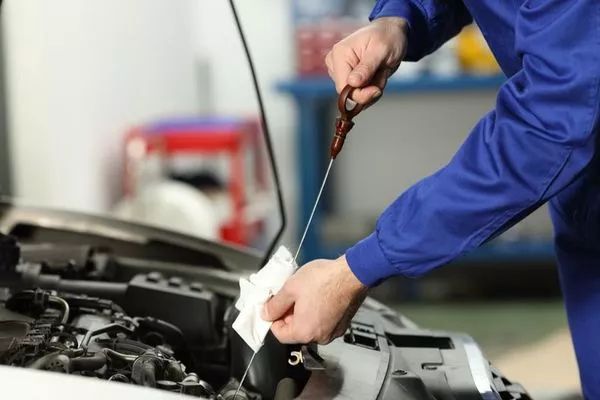
If you notice water droplets on the dipstick, it’s a clear indication of a potential problem
>>> Grab your attention: Car Engine Oil Analysis: What’s your Engine Oil Telling You?
7. Assess the rest of the vehicle
Aside from the engine, flood water can also damage the electrical component of the vehicle. Try the power locks, power seats, power windows, headlight, air conditioning, stereo, and headlights. If you notice any of these components functioning differently than it did before the flooding happened, there's potential trouble in the electrical system of the car.
For any detected electrical trouble, contact your mechanic right away. Also check the power steering, brakes, clutch and coolant reservoir for any indication of damage. If your vehicle is an older model, inspect the fuel system for any sign of damage as well.
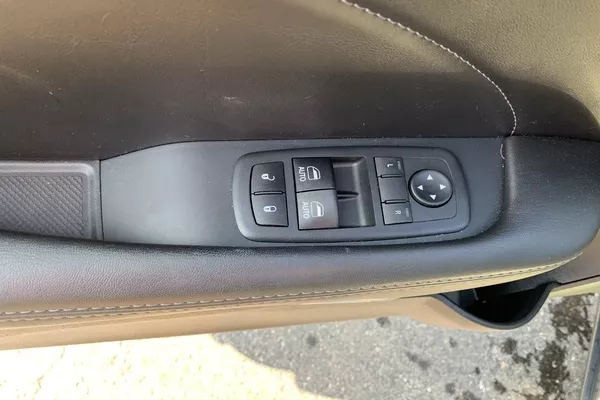
Try the power locks, power seats, power windows, headlight, air conditioning, stereo, and headlight
>>> Related: What is a hydrolocked engine & How to deal with it?
8. Wait for the decision of the insurance company
If you have comprehensive insurance, the insurance agent will evaluate your vehicle if it can still be repaired or it will need to be replaced. The insurance provider will weigh the car’s value against the cost of repair.
If the cost of repair is more than the car’s worth, it will be deemed totaled. The insurance agent will take photos of the damage to accompany your insurance claim.
>>> FYI: Top 10 car brand with best customer service in the Philippines.
9. Weigh your options
Check if the repair cost is more expensive than buying a replacement. If that’s the case, then start thinking of buying another car. Replacing your vehicle will surely cost good money, but you will be able to save yourself some major and expensive headaches down the road.
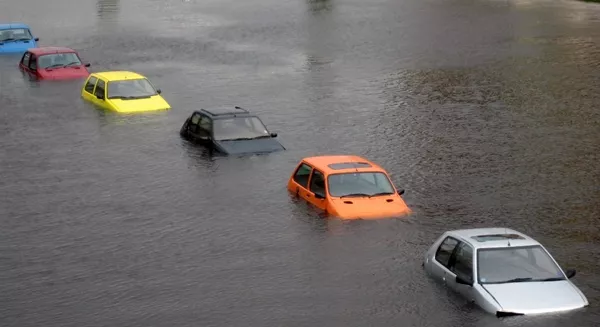
Check if the repair cost is more expensive than buying a replacement
Additionally, if you plan to buy a used car, make sure to review the history report of the car. It will provide a comprehensive back story of the vehicle. It will give the most valuable information including sales and ownership history, repair records, odometer reading, and, most importantly, its title branding.
It will tell you if the vehicle has been in fire, flood or an accident. Take the car to a mechanic for a third-party inspection before releasing any money for the car.
Recent posts
- 14 safety tips when you have to drive in heavy rain Aug 16, 2022
- Safe driving: Headlight tips when it comes to rainy season Aug 16, 2022
- Prepare your ride for rainy season: 6 common car problems & tips to avoid Aug 16, 2022
- 8 steps to do when your car gets flooded in the Philippines Jul 31, 2018
- How to drive safely in heavy rain: 5 essential tips Dec 05, 2017












